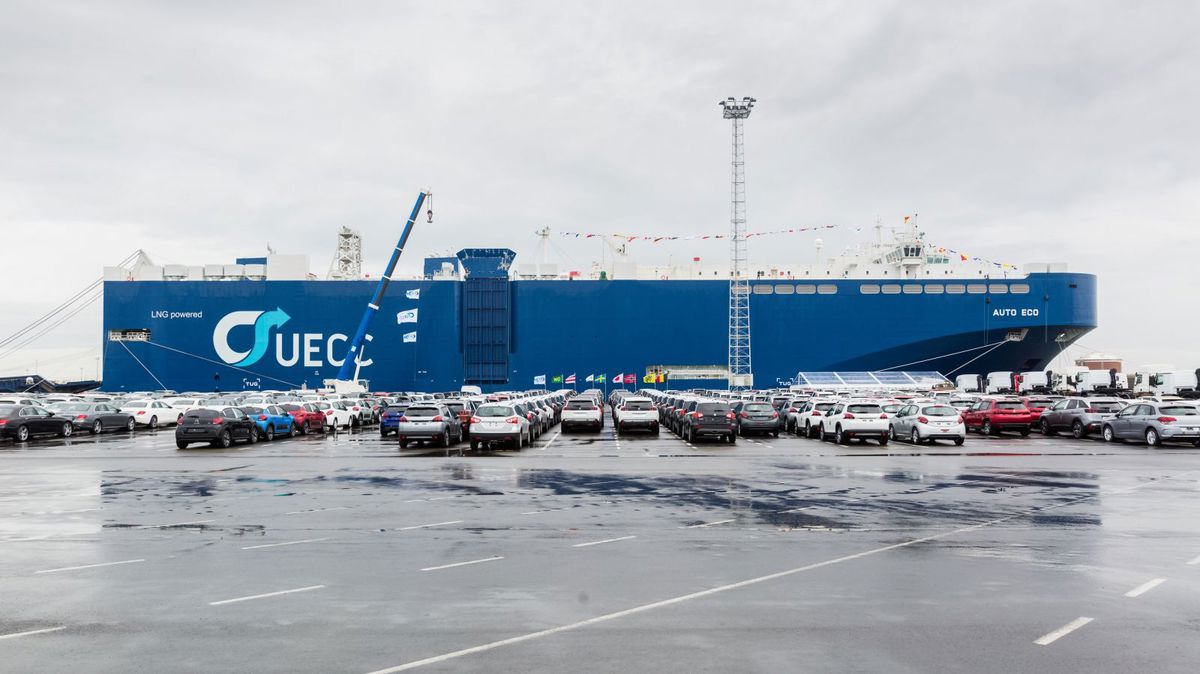UECC set to outperform FuelEU with LBM strategy
United European Car Carriers (UECC) says its liquefied biomethane consumption will help make its fleet overcompliant with FuelEU Maritime and free up surplus credits that it will sell on.
 IMAGE: UECC's LNG- and LBM-capable pure car and truck carrier, Auto Eco. UECC
IMAGE: UECC's LNG- and LBM-capable pure car and truck carrier, Auto Eco. UECC
So far this year, the Norwegian shipping company estimates that its fleet-wide greenhouse gas (GHG) intensity has been 68 CO2-equivalent per megajoule (gCO2e/MJ), which it says is a 25% reduction from a 2014 baseline.
For the year as a whole, UECC expects to achieve a fleet-wide GHG intensity of 57 gCO2e/MJ.
Both of these GHG intensities are well below FuelEU Maritime’s 2025 target of 89.3 gCO2e/MJ, and even the 2035 target of 77.9 gCO2e/MJ.
LBM at the core of compliance
The shipping firm has identified manure-based liquefied biomethane (LBM) as its primary compliance fuel. It has fuelled five of its dual-fuel LNG vessels with LBM and considers it a key driver in lowering the GHG intensity of its overall fleet.
LBM, along with other alternative fuels such as biofuels and LNG, accounted for 42% of UECC’s total fuel consumption across its 16 pure car and truck carriers in 2024, up from 34% the previous year.
It projects this share to increase to 58% by 2030.
Early engagement with suppliers has helped it secure future LBM volumes, Masanori Nagashima, UECC’s senior manager of business planning and sustainability explained.
It has extended a supply agreement with Dutch firm Titan for mass-balanced LBM through most of 2025. It also recently received its first physical LBM bunker stem from Naturgy in Spain, broadening its regional supply base beyond Titan’s Zeebrugge operations.
Monetising surplus compliance
UECC's fuel purchasing plan will make it overcompliant with FuelEU Maritime for many years to come, UECC’s sustainability manager Daniel Gent told ENGINE in January. The strategy also supports compliance under the EU Emissions Trading System (EU ETS), creating additional cost savings.
Instead of passing FuelEU fuel surcharges on to its customers, UECC plans to sell surplus credits to third-party vessels via the regulation’s pooling mechanism to help offset the extra costs it incurs from buying lower-emission fuels.
The company is also targeting a 45% reduction in GHG intensity by 2030, compared to its 2014 baseline, and net zero by 2040 – a full decade ahead of the IMO’s 2050 goal.
While over-the-counter markets have emerged for trading FuelEU compliance surplus, Gent said, “UECC will never be in a position of needing to buy or borrow compliance units.”
By Konica Bhatt
Please get in touch with comments or additional info to news@engine.online





